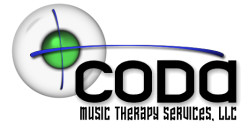This month, January 2011, there is an initiative for blogs and podcasts to highlight advocacy in music therapy. As I contemplated what to focus upon for this next blog, colleague Kimberly Sena Moore suggested I contribute to the advocacy project. To learn more about this initiative and to be connected to other advocacy posts, please visit her blog: Music Therapy Maven.
When I hear the word “advocacy”, I picture lobbying at the Capitol, calling legislators, and formal petitions. Although I did happen to attend church with a Senator this past weekend, all of that seems very intimidating and quite removed from my daily life. However, by definition, to advocate is merely “to support or recommend publicly; to plead for or speak in favor of [a cause]”. That doesn’t seem so difficult.
As some of you know, in my “free time” my significant other and I are involved in real estate investment and property flipping. (Music therapist by day, DIY diva by night!) We are currently in the middle of remodeling a house that was foreclosed and in desperate need of some love. Over holiday break we tackled sanding the hardwood floors. To do this we had to rent an orbital floor sander from Home Depot and, as is pretty typical, we were both wearing Michigan State apparel when we went to pick up the sander. The Home Depot Associate working the rental desk asked us about our affiliation with the university and I simply responded that John has a psychology degree and I have degrees in music education and music therapy and left it at that. We loaded up the sander and headed off to the house. About an hour into the project, we realized we were going to need to trade out some of the sanding disks for a different grade paper. So I headed back to Home Depot for supplies while John kept working.
The same Home Depot Associate (HDA) was working and, as he helped me find the necessary supplies, the following conversation ensued.
HDA: Do you still do anything with your music degrees?
Me: Yes, I actually have a music therapy private practice. Mostly, I contract within schools and work with children in special education, lots of kids with autism and other special needs…
HDA: So, most music therapists work with children?
Me: No, not necessarily. I just prefer to work with children. There are lots of music therapists who work with the elderly and those with dementia…music and memory are very closely related in the brain. There are also music therapists working with Parkinson’s patients, particularly with gait training…walking…
HDA: Is it that the rhythm helps them walk?
Me: Exactly. And music at different tempos can help with moving at different speeds. Also, there are music therapists that work in hospitals, hospice, mental health… it’s a very diverse field.
HDA: Didn’t MSU stop the music therapy program?
Me: Yeah… I’m still pretty aggravated by that.
We then proceeded to discuss the recent moratorium of the music therapy program at MSU. It turns out he exercises at the intramural building that is across from the music buildings and had encountered music professors during his work-outs. I was so surprised and excited about this conversation that, as soon as I got in the car, I pulled out my phone and posted on Facebook: “Got to talk about music therapy with the tool rental guy at The Home Depot. He even knew about MSU closing the MT program. Pretty sweet interaction, if you ask me!”
This is advocacy! Everytime we talk about our profession – with anyone – we are advocating. For all I know, the Home Depot Associate could be the Governor’s nephew! Who might the cashier at the grocery store know? Or the teller at the bank?
But what if I did not have to return to the store? This conversation would not have happened, simply because I did not take the initiative to advocate for my profession. When he asked about our majors I could have easily asked if he was familiar with music therapy. Why didn’t I? Probably because, in the ten years I have been involved with the field, I have had to correct so many misconceptions of music therapy. It can be both exhausting and frustrating. However, every time we explain the many facets of our profession, that is one less misconception that will have to be corrected later. And, hopefully, that person can proceed to educate others.
Advocacy does not have to be extravagant, inconvenient or challenging. It can be as simple as volunteering information about music therapy to those we encounter in our everyday life. With the increase and accessibility of social networking, the world is shrinking. So, though you may be telling your story to a ‘mere’ sales associate, you never know where that interaction may lead.
 This weekend I tackled a very important item on my to-do list: I submitted my very first Application for Recertification to the Certification Board for Music Therapists. Alas, it is not “once a music therapist, always a music therapist.” Rather, various obligations need to be fulfilled in order to maintain status as a board-certified music therapist.
This weekend I tackled a very important item on my to-do list: I submitted my very first Application for Recertification to the Certification Board for Music Therapists. Alas, it is not “once a music therapist, always a music therapist.” Rather, various obligations need to be fulfilled in order to maintain status as a board-certified music therapist. 






